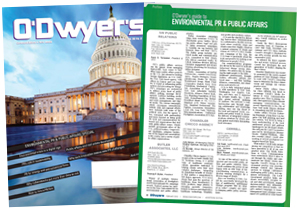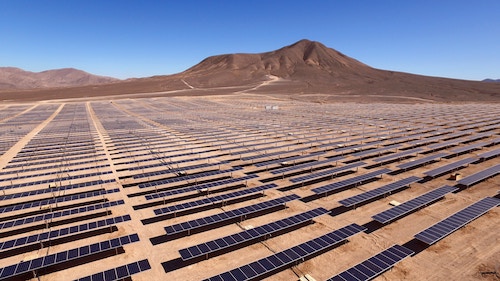|
|
Wind and solar energy prices have plummeted, algae as biofuel has boomed and demand is up for electric vehicles. Innovations and public support for green tech have reached new highs, but those who position themselves with the right communication strategies will find the most potential amidst this change.
|
|
This golden age of green innovation has such breadth that it has become hard to predict which technologies will win out. In actuality, what will create a healthier planet is the adoption of many technologies and lifestyle changes that will individually have a relatively small impact.
Yes, this is an exciting time, but it does present yet another challenge for communicators, especially those in the green energy space: staying informed and building strategies in the face of rapid innovation and changes to consumer preferences.
It’s not a challenge that is decidedly unique to just that industry, though. The rate of innovation seems to be accelerating. As for consumer preferences, just ask fast food restaurants and soda companies about the fickleness of consumer tastes.
Does that mean PR professionals are doomed to a future of reactive communication?
Surely, some brands will play a perpetual game of catch-up, but those who position themselves with the right strategies and technology will find enormous potential amidst all this change.
The green energy space is a perfect theoretical laboratory for understanding the keys to the potential of modern public relations and how even amazingly fast innovation presents opportunities for unique communication.
Turn innovation into market research
The great green solution of tomorrow might be only a whisper and seem totally implausible today.
Take, for example, a recent idea coming out of Switzerland that has reimagined kites as a form of renewable energy because winds at higher altitudes tend to have more gusto, according to the Bulletin of the Atomic Scientists.
As cool as that sounds, the technology needs to become more efficient before it hits the market, making widespread usage of them years away at the earliest. You don’t have to be an investor to find value in the budding technology, though.
A conventional wind power company with media monitoring technology will have a better understanding of public perception around the idea thanks to traditional and social media. As a best practice, the analysis should include low-level looks at individual comments and high-level looks at the sentiment and tone of the posts as a whole.
A thrilled, enthusiastic audience shouldn’t necessarily cause communicators to recommend a business to pivot from its current course. It has a more realistic and immediate benefit: enabling you to better understand the needs and concerns of your audience.
The comments about a relatively theoretical piece of technology won’t align directly with a business dealing in more established technology, such as solar energy, and may seem mostly irrelevant to a major oil supplier. However, the data provides a more thorough understanding of the desires and concerns of a niche part of the market that can help you better position your product or service.
In Cision’s “Listen” e-book, the authors call on communicators to use social media listening tools to better understand and engage with influencers, prospects, customers, employees and competitors.
In many cases, your competitor won’t be the company stealing your lunch with every client it snaps up. Competitors include those competing for portions of your target audience’s attention. By understanding competitors’ progress and the reaction to it, you can better align your values with the specific audiences you are attempting to reach.
Turn innovation into content
Content creation has become a key communication tactic. It has become so widely adopted that marketing expert Mark Schaefer has had to warn of content shock, the idea that our audience’s attention is nearly maxed out and content, as much of it is today, will stop producing results.
That doesn’t mean content is doomed. Today’s communicators need to do a better job of creating by providing useful, interesting, concise and unique content pieces that will stand out among a sea of flimsy listicles.
Returning to our kite example, a more traditional wind energy producer could use the announcement to create an infographic or multimedia timeline that showcases the evolution of wind technology from thousands of years ago through its promising future. Including compelling data about the number of cars a single turbine could take off the road, for example, would make the piece more relatable to a wider audience.
Remember, the key to content success involves dissemination through paid and owned channels, such as press releases and promoted social posts, as well as earned media, including influencers’ channels.
Turn innovation into relationships
Often, it’s the usual suspects — industry trade magazines or major outlets — who alert the world to the most promising breakthroughs ... or the most unusual.
Whether or not you have luck landing placements from these coveted publications, one of the most overlooked aspects of coverage is identifying under-the-radar influencers.
When news in your industry breaks, who has the most insightful comments? The answer may surprise you. The keynote speaker at last year’s major conference may have the most popularity, but a second- or third-tier personality with a quarter of the following may have the best insights.
You can bet that as more see their ideas, they will grow into an industry leader. Why not use your influence and owned channels to give them a boost?
In addition to the usual benefits of influencer marketing, you may find that this lesser-known person will have more enthusiasm than a well-traveled influencer, thus lightening your load. They will also have an appreciation to you for enabling their rise.
The key is finding these industry leaders, but that may be the least difficult part. Modern influencer databases allow users to search by specific topics to find the influencers in a particular space. Additionally, it has a single dashboard that provides access to influencers’ social profiles, pitching preferences and a real-time look at what they cover.
The inevitability of change
PR professionals have remained nimble over the past decade, adapting to 24-hour news cycles, democratized voices on blogs and social, and proving the value of a department once evaluated by soft metrics.
Your ability to adapt will be just as important as it has been the past 10 years. Examining challenges for the opportunities they provide and equipping yourself with the right tools and technology to pursue those opportunities will be key to successful public relations today and into our greener, more breathable future.
* * *
Brandon Andersen is Director of Marketing at Cision.




 A focus on all the ways that greenhouse gases are created, not just from fossil fuels, marks the evolution from clean energy and clean tech to climate tech, according to Melissa Mahoney from V2 Communications.
A focus on all the ways that greenhouse gases are created, not just from fossil fuels, marks the evolution from clean energy and clean tech to climate tech, according to Melissa Mahoney from V2 Communications. Kristin Wilson-Palmer, who has been a senior VP in Edelman’s Washington, DC office since 2021, joins the Natural Resources Defense Council as chief communications officer.
Kristin Wilson-Palmer, who has been a senior VP in Edelman’s Washington, DC office since 2021, joins the Natural Resources Defense Council as chief communications officer. Educating the next generation to the facts and science surrounding the climate crisis.
Educating the next generation to the facts and science surrounding the climate crisis. Melanie Janin, who was executive VP at Weber Shandwick, has joined Conservation International as chief communications & marketing officer.
Melanie Janin, who was executive VP at Weber Shandwick, has joined Conservation International as chief communications & marketing officer.



 Have a comment? Send it to
Have a comment? Send it to 
No comments have been submitted for this story yet.